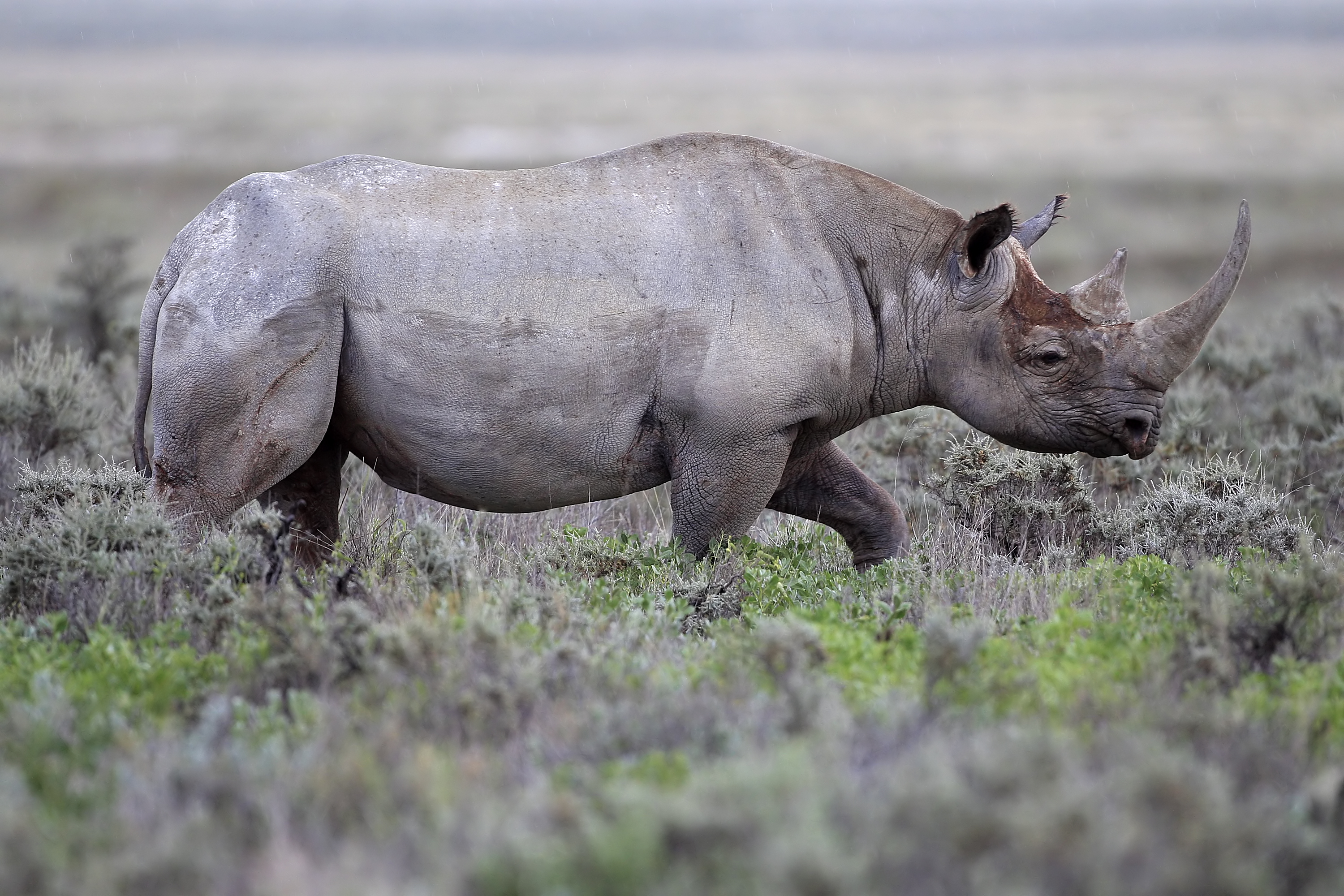

Yathin S Krishnappa - Flickr - CC BY-SA 3.0
Populations of black rhino declined dramatically in the 20th century at the hands of European hunters and settlers. Between 1960 and 1995, black rhino numbers dropped by a sobering 98%, to less than 2,500. Since then, the species has made a tremendous comeback from the brink of extinction. Thanks to persistent conservation efforts across Africa, black rhino numbers have doubled from their historic low 20 years ago to around 5,600 today. However, the black rhino is still considered critically endangered, and a lot of work remains to bring the numbers up to even a fraction of what it once was—and to ensure that it stays there. Wildlife crime—in this case, poaching and black-market trafficking of rhino horn—continues to plague the species and threaten its recovery.
Of all the threats facing black rhinos, poaching is the deadliest. Black rhinos have two horns which make them lucrative targets for the illegal trade in rhino horn A wave of poaching for rhino horn rippled through Kenya and Tanzania, continued south through Zambia's Luangwa Valley as far as the Zambezi River, and spread into Zimbabwe. Political instability and wars have greatly hampered rhino conservation work in Africa, notably in Angola, Rwanda, Somalia, and Sudan. This situation has exacerbated threats such as trade in rhino horn and increased poaching due to poverty.
WWF is establishing anti-poaching teams and developing environmental education programs that showcase the animal’s importance to the region. Adopt a Rhino and donate to the WWF's efforts to conservering their species.
Adopt a Rhino